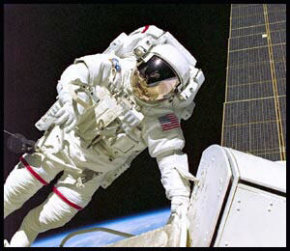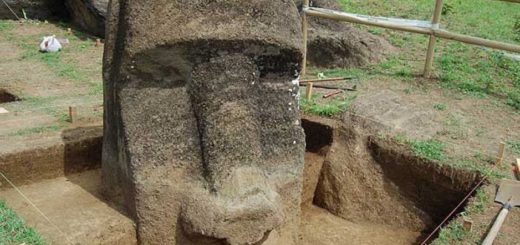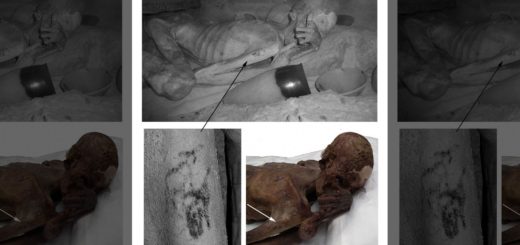How Space Suits Work

Think about how you suit up when you go outside on a cold winter’s day. You have your shirt, pants, sweater, perhaps long underwear, jacket, gloves, hat or hood, scarf and boots. You put on quite a bit of clothing to protect you from the cold.
Now, imagine what you would have to put on to protect you from outer space. Space suits must provide all of the comfort and support that the Earth or a spacecraft does, addressing issues like atmosphere, water and protection from radiation.
Outer space is an extremely hostile place. If you were to step outside a spacecraft and you weren’t wearing a space suit, the following things could happen:
You could become unconscious within 15 seconds because there’s no oxygen.
Your blood and body fluids could “boil” and then freeze because there is little or no air pressure.
Your tissues (skin, heart, other internal organs) could expand because of the boiling fluids.
You could face extreme changes in temperature. For example, in the sunlight temperatures might reach 248 degrees F (120 degrees C) and plummet to -148 F ( -100 C) in the shade.
You would be exposed to various types of radiation, such as cosmic rays, and charged particles emitted from the sun (solar wind).
You could be hit by small particles of dust or rock that move at high speeds (micrometeoroids) or orbiting debris from satellites or spacecraft.
So, to protect you from these dangers, a space suit must:
Have a pressurized atmosphere
Give you oxygen and remove carbon dioxide
Maintain a comfortable temperature despite strenuous work and movement into and out of sunlit areas
Protect you from micrometeoroids and from radiation to some degree
Allow you to see clearly, move easily inside the space suit and outside of the spacecraft, and communicate with others (ground controllers, fellow astronauts)
That’s a big job. In this article, we will examine the problems of walking in outer space and how space suits are made to cope with them.
By creating an Earth-like environment within the suit itself, space suits allow humans to walk around in space in relative safety. Space suits provide:
Pressurized Atmosphere
The space suit provides air pressure to keep the fluids in your body in a liquid state — in other words, to prevent your bodily fluids from boiling. Like a tire, a space suit is essentially an inflated balloon that is restricted by some rubberized fabric, in this case, Neoprene-coated fibers. The restriction placed on the “balloon” portion of the suit supplies air pressure on the astronaut inside, like blowing up a balloon inside a cardboard tube.
Most space suits operate at pressures below normal atmospheric pressure (14.7 lb/in2, or 1 atm); the space shuttle cabin also operates at normal atmospheric pressure. The space suit used by shuttle astronauts operates at 4.3 lb/in2, or 0.29 atm. Therefore, the cabin pressure of either the shuttle itself or an airlock must be reduced before an astronaut gets suited up for a spacewalk. A spacewalking astronaut runs the risk of getting the bends because of the changes in pressure between the space suit and the shuttle cabin.
Oxygen
Space suits cannot use normal air — 78 percent nitrogen, 21 percent oxygen and 1 percent other gases — because the low pressure would cause dangerously low oxygen concentrations in the lungs and blood, much like climbing Mt. Everest does. So, most space suits provide a pure oxygen atmosphere for breathing. Space suits get the oxygen either from a spacecraft via an umbilical cord or from a backpack life support system that the astronaut wears.
Both the shuttle and the International Space Station have normal air mixtures that mimic our atmosphere. Therefore, to go into a pure oxygen space suit, a spacewalking astronaut must “pre-breathe” pure oxygen for some period of time before suiting up. This pre-breathing of pure oxygen eliminates the nitrogen from the astronaut’s blood and tissues, thereby minimizing the risk of the bends.
Carbon Dioxide
The astronaut breathes out carbon dioxide. In the confined space of the suit, carbon dioxide concentrations would build up to deadly levels. Therefore, excess carbon dioxide must be removed from the space suit’s atmosphere. Space suits use lithium hydroxide canisters to remove carbon dioxide. These canisters are located either in the space suit’s life support backpack or in the spacecraft, in which case they are accessed through an umbilical cord.
Temperature
To cope with the extremes of temperature, most space suits are heavily insulated with layers of fabric (Neoprene, Gore-Tex, Dacron) and covered with reflective outer layers (Mylar or white fabric) to reflect sunlight. The astronaut produces heat from his/her body, especially when doing strenuous activities. If this heat is not removed, the sweat produced by the astronaut will fog up the helmet and cause the astronaut to become severely dehydrated; astronaut Eugene Cernan lost several pounds during his spacewalk on Gemini 9. To remove this excess heat, space suits have used either fans/heat exchangers to blow cool air, as in the Mercury and Gemini programs, or water-cooled garments, which have been used from the Apollo program to the present.
Micrometeroids
To protect the astronauts from collisions with micrometeroids, space suits have multiple layers of durable fabrics such as Dacron or Kevlar. These layers also prevent the suit from tearing on exposed surfaces of the spacecraft or a planet or moon.
Radiation
Space suits offer only limited protection from radiation. Some protection is offered by the reflective coatings of Mylar that are built into the suits, but a space suit would not offer much protection from a solar flare. So, spacewalks are planned during periods of low solar activity.
Clear Sight
Space suits have helmets that are made of clear plastic or durable polycarbonate. Most helmets have coverings to reflect sunlight, and tinted visors to reduce glare, much like sunglasses. Also, prior to a spacewalk, the inside faceplates of the helmet are sprayed with an anti-fog compound. Finally, modern space suit helmet coverings have mounted lights so that the astronauts can see into the shadows.
Mobility Within the Space suit
Moving within an inflated space suit is tough. Imagine trying to move your fingers in a rubber glove blown up with air; it doesn’t give very much. To help this problem, space suits are equipped with special joints or tapers in the fabric to help the astronauts bend their hands, arms, legs, knees and ankles.
Communications
Space suits are equipped with radio transmitters/receivers so that spacewalking astronauts can talk with ground controllers and/or other astronauts. The astronauts wear headsets with microphones and earphones. The transmitters/receivers are located in the chestpacks/backpacks worn by the astronauts.
Astronaut Bruce McCandless II floated freely in space while testing the Manned Maneuvering Unit (MMU) during an early shuttle flight.
Astronaut Bruce McCandless II floated freely in space while testing the Manned Maneuvering Unit (MMU) during an early shuttle flight.
PHOTO COURTESY NASA
Mobility in the Spacecraft
In weightlessness, it is difficult to move around. If you push on something, you fly off in the opposite direction (Newton’s third law of motion — for every action there is an equal and opposite reaction). Gemini spacewalking astronauts reported great problems with just maintaining their positions; when they tried to turn a wrench, they spun in the opposite direction. Therefore, spacecraft are equipped with footholds and hand restraints to help astronauts work in microgravity. In addition, before the mission, astronauts practice spacewalking in big water tanks on Earth. The buoyancy of an inflated space suit in water simulates microgravity.
NASA has also developed some gas-powered rocket maneuvering devices to allow astronauts to move freely in space without being tethered to the spacecraft. One such device, which was called the Manned Maneuvering Unit (MMU), was basically a gas-thruster powered chair with a joystick control. NASA has also developed a nitrogen-gas propelled unit that fits on the backpack, called the Simplified Aid for Extravehicular Activity Rescue (SAFER). The SAFER can help an astronaut return to the shuttle or station in the event that he/she gets separated from the spacecraft. The SAFER holds 3.1 lb (1.4 kg) of nitrogen propellant and can change an astronaut’s velocity by a maximum of about 9 feet/second (3 meters/second).



 Creators of mankind
Creators of mankind Description of “Tall white aliens”
Description of “Tall white aliens” Where they came from?
Where they came from? About hostile civilizations
About hostile civilizations The war for the Earth
The war for the Earth “Tall white aliens” about eternal life
“Tall white aliens” about eternal life Video: “Nordic aliens”
Video: “Nordic aliens” Aliens
Aliens Alien encounters
Alien encounters The aliens base
The aliens base UFO
UFO Technology UFO
Technology UFO Underground civilization
Underground civilization Ancient alien artifacts
Ancient alien artifacts Military and UFO
Military and UFO Mysteries and hypotheses
Mysteries and hypotheses Scientific facts
Scientific facts


















